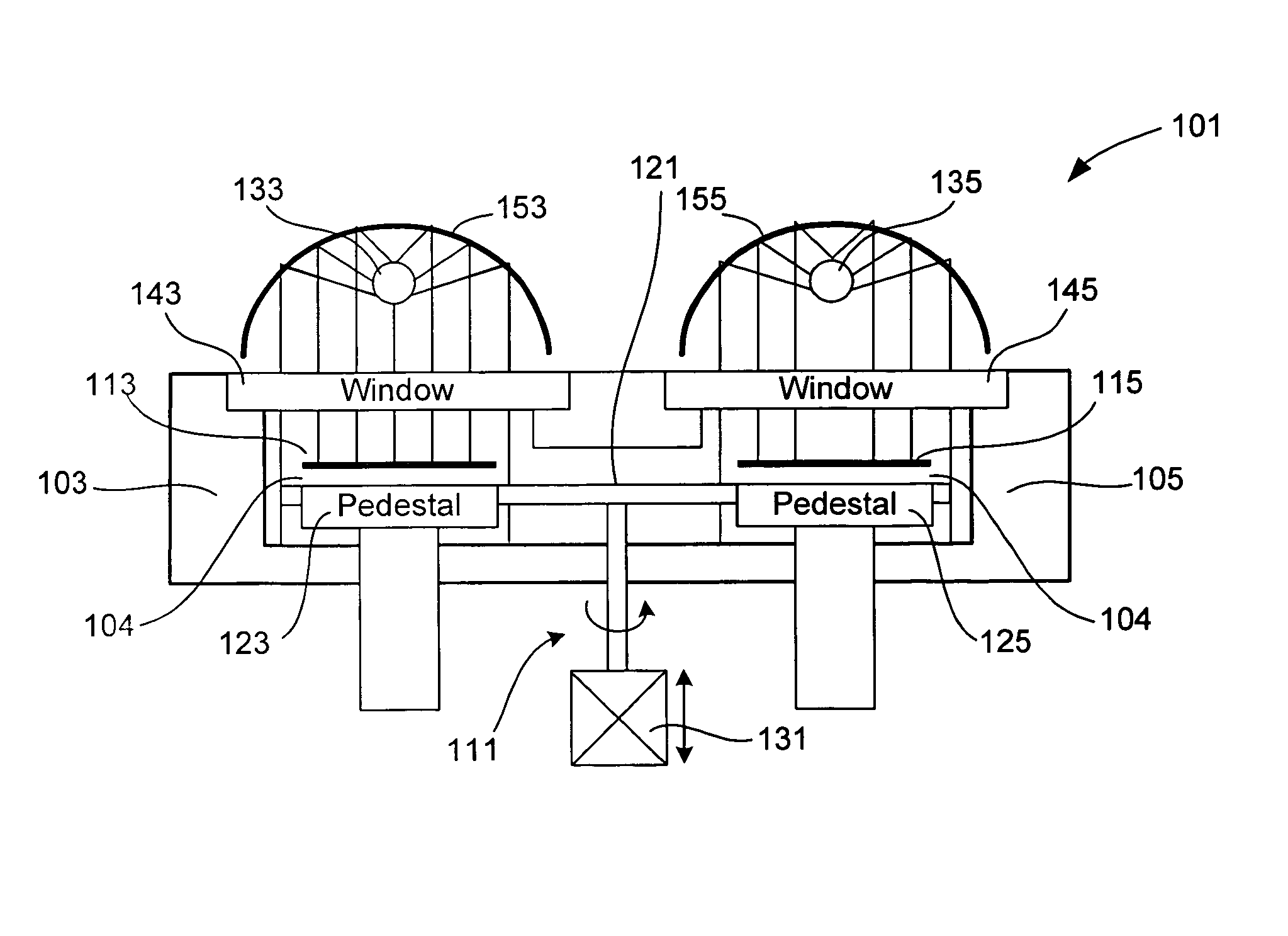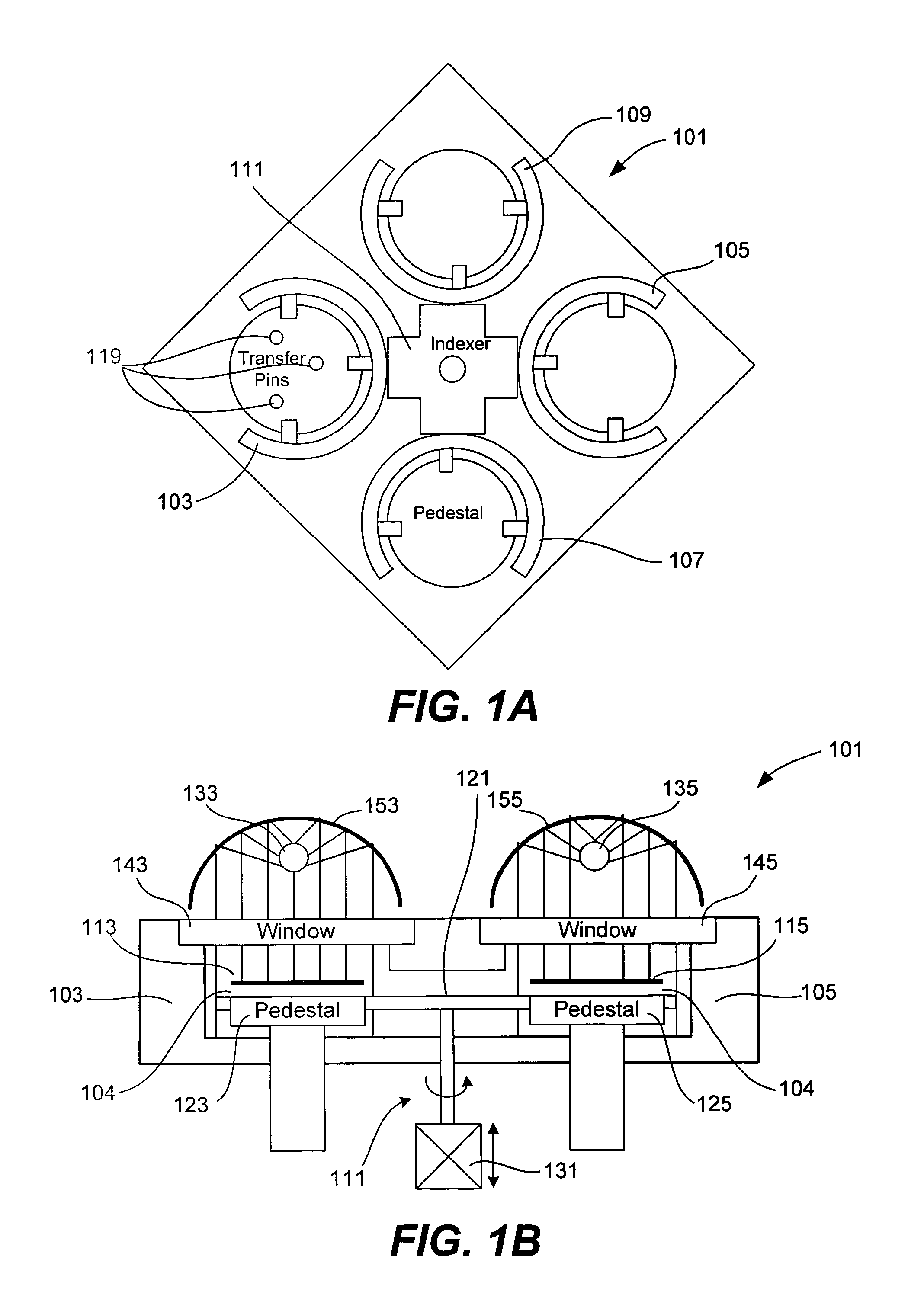Single-chamber sequential curing of semiconductor wafers
a technology of semiconductor wafers and curing chambers, applied in the direction of coatings, metallic material coating processes, chemical vapor deposition coatings, etc., can solve the problems of softer and mechanically weaker dense osg films, further mechanical properties, and inability to harden or strengthen films
- Summary
- Abstract
- Description
- Claims
- Application Information
AI Technical Summary
Benefits of technology
Problems solved by technology
Method used
Image
Examples
Embodiment Construction
Introduction
[0028]In the following detailed description of the present invention, numerous specific embodiments are set forth in order to provide a thorough understanding of the invention. However, as will be apparent to those skilled in the art, the present invention may be practiced without these specific details or by using alternate elements or processes. In other instances well-known processes, procedures and components have not been described in detail so as not to unnecessarily obscure aspects of the present invention. While the use of Ultraviolet (UV) radiation has been employed for purposes of illustrating the present invention, other forms of radiation (i.e., from other parts of the electromagnetic spectrum) can also be practiced using the same essential elements described herein.
[0029]UV curing of semiconductor wafers has many applications including removing porogens, strengthening porous OSG backbones, improving dense non-porous OSG film properties, curing nitrides and o...
PUM
| Property | Measurement | Unit |
|---|---|---|
| gate width | aaaaa | aaaaa |
| gate width | aaaaa | aaaaa |
| temperatures | aaaaa | aaaaa |
Abstract
Description
Claims
Application Information
 Login to View More
Login to View More - R&D
- Intellectual Property
- Life Sciences
- Materials
- Tech Scout
- Unparalleled Data Quality
- Higher Quality Content
- 60% Fewer Hallucinations
Browse by: Latest US Patents, China's latest patents, Technical Efficacy Thesaurus, Application Domain, Technology Topic, Popular Technical Reports.
© 2025 PatSnap. All rights reserved.Legal|Privacy policy|Modern Slavery Act Transparency Statement|Sitemap|About US| Contact US: help@patsnap.com



